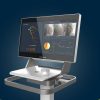Every industry has been impacted by COVID-19, particularly medical technology, as it was forced into overdrive in response to urgent public health needs. We saw a plethora of changes to the industry, many of which we hope will stick around in a post-pandemic world. One example? Increased access to telehealth, which has seen 50 to 175 times the number of patients accessing healthcare remotely compared to 2019’s records.
We witnessed other consequences as well, such as lockdown orders and social distancing upending established processes and clinical trials, as the focus shifted to the development of a COVID-19 vaccine. As we move further into a new year and the vaccine continues to roll out in the United States and around the world, we can expect to see some of the necessary changes to the industry in 2020 continue to develop and innovate medtech practices for the better.
Precision Medicine Begins with Precision Diagnoses
As we have seen with the global focus on the pandemic, treating diseases before fully understanding the diagnosis first is suboptimal. We know little about the “long haul” SARS-CoV-2 symptoms. Indeed, an initial diagnosis and treatment of COVID does not fully address all the needs of the one-third of patients who still experience symptoms long after they are cleared for infection. Clinical trials to understand the progression of illness and response to treatment will continue to be a vital step and source of knowledge in this area.
Proper precision diagnoses improve standards of care to ultimately better treat illness, but therapies are not the only answer. Clayton Christensen pointed out in The Innovator’s Prescription that it is virtually impossible to optimally choose therapy until you have the correct diagnosis, but the question is “how?” Medtech innovations and AI development are paving the way to quantify limitations healthcare providers currently experience. As medical professionals continue to collaborate with innovators around pain points they experience in their everyday practice, diagnosing illnesses will continue to improve in accuracy and lead to better treatments.
Nurses’ Invaluable Insights
It is impossible to overstate the value of nurses in the healthcare workforce. There are few who truly understand the day-to-day challenges they face when caring for patients. They have served tirelessly on the frontlines during the pandemic. Afterward, their unique experiences and perspectives will remain critical in healthcare advancements by serving in more prominent roles on medtech advisory boards.
A physician’s expertise lies in knowing the mechanics of a therapy and its risk-benefit or the inner-workings of a newly developed device, but it is the nurses who treat the adverse side effects of said drug or operate the device, all while listening to a patient’s story and what their experience has been. Regular feedback and insight from nurses throughout the development process of new technology will aid in considering a product’s viability and practical usage early on in the process. Everyone will benefit when nurses have a seat at the table where new innovations are being discussed. This year and in the future, we should anticipate nurses being included in this process to avoid issues that blindsided some medical communities during the pandemic like anticipatable shortages of personal protective equipment.
More Accessible Clinical Trials
Last spring, many clinical trials were forced to pause or postpone operations when labs and medical facilities restricted access due to COVID-related safety concerns. However, clinical trial investigators and Institutional Review Boards needed to consider how they could progress trials during the pandemic so that progress was not lost as a result. In response, the FDA guidance noted: “Central to any decision should be ensuring that the safety of clinical trial participants can be maintained.”
The circumstances of a trial, including the nature of the investigational product, ultimately determined the best way for clinical trials to move forward during COVID-19. Trials at risk of getting stuck in neutral were able to incorporate remote and virtual components to screening, participation and monitoring, which opened new pathways for conducting trials. Necessity is the mother of invention and innovation, and in this case, many of the innovations developed in 2020 will carry forward to drive efficiency, expand participation and effectively keep more patients safely involved in ongoing trials. Similar to the increase in the use of telemedicine, reducing person-to-person contact due to the coronavirus did not completely impede the ability to conduct quality clinical studies.
Because we have seen its successes, we will continue to see adjustments and improvements to virtual components of clinical trials in the future. This not only allows for more participants in the studies, but is an opportunity to improve safety and efficiency across the board.
While curbing the effects of a deadly pandemic and keeping our communities safe was a top priority in 2020, the challenges also brought about necessary change and acceleration. While we hope that 2021 will be less volatile, there are certainly elements that should remain from a healthcare perspective. This year, we have the opportunity not only to refine the processes that were implemented in a hurry during the pandemic, but the insight to improve healthcare for all.







